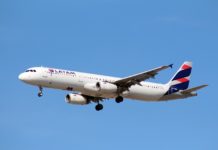Por recomendação do Serviço Secreto Americano, o FAA implementou restrições ao espaço aéreo da Georgia no período de 6 a 10 de Junho, durante o encontro do G-8.
Leia na íntegra, a recomendação, em inglês, enviada a nós pelo FAA.
The G8 Summit will be held at Sea Island, GA from June 8-10, 2004.
Before and during the summit, the President of the United States and a number of world leaders will arrive in the area for the summit meetings.
Because the event has been designated a National Special Security Event, the United States Secret Service is the lead agency in charge of security
design, planning and implementation.
To ensure the airspace is secure during this event, airspace restrictions will be in place around Sea Island and Savannah, GA. The restrictions are designed to provide a safe and secure nvironment for the summit, but also to ensure fair and equitable access to all airspace users to the greatest extent possible. The restrictions will allow commercial
flight operations to continue and are designed to minimize the impact on private pilots.
Two Temporary Flight Restriction (TFR) areas are part of the summit airspace security measures. Each includes a 10-nautical-mile inner ring with a
special set of restrictions, and a 30-or 40-nautical-mile outer ring with another set of restrictions. Hunter Army Airfield near Savannah is at the
center of the 30-nautical-mile restricted area, and McKinnon Airport on Saint Simons Island is at the
center of the 40-nautical-mile ring.
The only two airports that will officially close during the summit are McKinnon Airport and Jekyll Island Airport. Brunswick/Golden Isles Airport and Savannah/Hilton Head International Airport will allow only approved commercial passenger and
cargo flights.
The only aircraft permitted to operate, overfly and land or depart within the 10-mile ring are: law
enforcement and military aircraft supporting the U.S. Secret Service; emergency services; and regularly scheduled commercial passenger and
cargo flights that meet or exceed federal security standards and are arriving to or departing from an
airport with an approved federal security program.
In the airspace between the 10-mile ring and the 30- or 40-mile rings, the only general aviation aircraft that will be authorized to fly are those
departing or landing at an airport in that outer ring.
All aircraft that receive authorization to fly within the TFRs will be required to operate on an active Instrument or Visual Flight Rules flight plan that is filed directly with an FAA Automated Flight
Service Station, must use a discrete transponder code assigned by FAA Air Traffic Control (ATC) and must remain in continuous two-way communication with ATC.
Operations that are prohibited within the TFRs are: flight training, practice instrument approaches,
aerobatic flight, gliders, parachute operations, ultralights, hang gliders, hot air balloons, agriculture/crop dusting, animal population control
flight operations, banner towing operations, seaplanes, utility line/pipe inspection flights, media
aircraft, and commercial cargo carrier operations that fail to meet federal security standards.
FONTE: Aviação Brasil – Laura Brown/FAA – Washington/DC





